Research news
Associate Prof Mike Fessing shares his latest research
The Faculty of Life Science award a prize for best monthly publication. This provides funding for promotion of research and CSS were delighted that Associate Prof Mike Fessing recorded a short interview to explain his latest research.
https://www.youtube.com/watch?v=XBKFWVDCYf0
Dr Fessing also used the funding to attend a conference and below you can read his conference report.
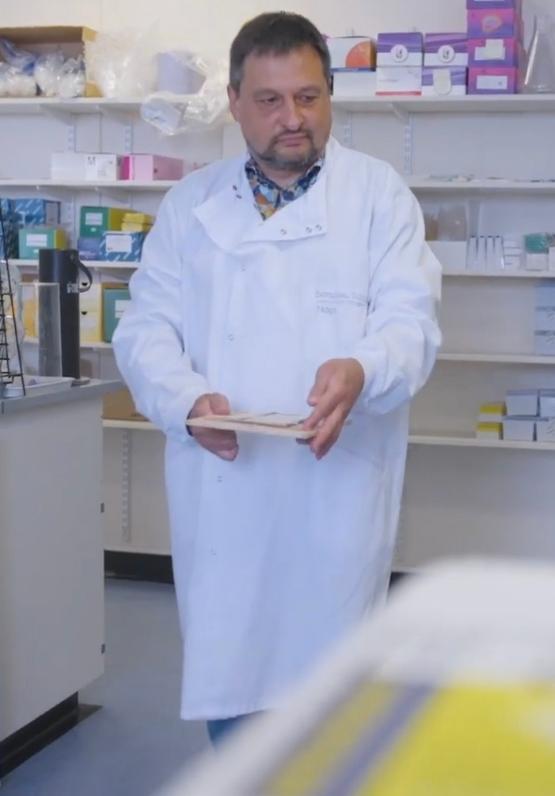
Associate Prof Mike Fessing at work in his Laboratory
Conference report from Associate Prof. Mike Fessing
I attended Gordon Research Conference on Epithelial Differentiation and Keratinization held on 4-9 June in Rey Don Jaime Grant Hotel in Castelldefels, a beautiful suburb of Barcelona in Spain. The theme of this year's conference was “Novel Mechanisms of Regulation of Epithelial Biology and Their Implication in Physiology, Aging and Disease”. The conference was mostly, but not exclusively focused on skin and hair biology in health and disease. The conference Chair was Salvador Aznar Benitah (Barcelona, Spain) and the Vice Chairs were Maria Kasper (Stockholm, Sweden), and Elena Ezhkova (New York, USA). The conference was organized in one keynote session “Principles of Epidermal and Immune Physiology” where Paul Khavari (Stanford University, USA) and Jennifer Elisseeff (Johns Hopkins University, USA) delivered their lectures, and eight ordinary session: “Stem Cells and Homeostasis”, “Ageing and Stress”, “Epithelial-Environmental and Niche Interactions”, “Epigenetics”, “Tissue Architecture and Niche Interactions”, Tissue Regeneration”, “Cancer Genetics, Epigenetics and Signalling” and “Epithelial Therapeutics”. In addition, there were 61 posters presented at the meeting. It was great to see the long-term friends and peers in person and see new faces in the field. We had a lot of interesting exciting talked there. I can provide a brief highlight just about a few here. Continued below...
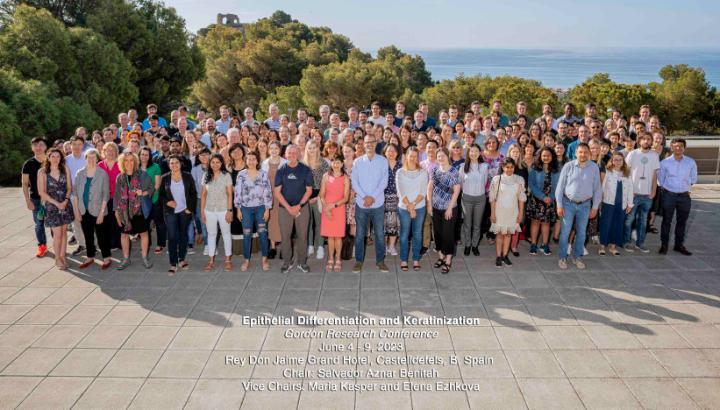
The 2023 Gordon Conference with Dr Mike Fessing
Elaine Fuchs (Howard Hughes Medical Institute, the Rockefeller University, USA) provided a talk about her team fascinating research skin epithelial stem cell memory. The cellular memory in neurones and immune-system cells were known and intensively studied for decades. More recently the cellular memory was uncovered in other cell types. It was observed long ago that skin wounds heal faster in the sites previously exposed to inflammation. Elaine’s team discovered that epidermal stem cells have the epigenetic memory of the previous exposure. This memory is based on the establishment and maintenance of the chromatin accessible sites in gene promoters and enhancers. The memory establishment is mediated by the STAT-3 transcription factor regulated by inflammation. The inflammation inducible gene expression ceases after the inflammation resolution. However, their promoter and enhancer regions retain an accessible chromatin structure. Interestingly, the key transcription factors are not bound there anymore.
Upon injury, the skin epithelial cells retaining the epigenetic memory activate wound healing associated genes much faster than the cells without such memory. How the skin epithelial cell epigenetic memory is established is revealed, however how it is maintained and erased remains a mystery. Importantly, the epithelial cell memory could be both beneficial (tissue repair) or detrimental (cancer and chronic inflammation). Uncovering molecular mechanisms of the cellular epigenetic memory in skin and other organs will provide the new exciting opportunity to develop revolutionary diagnostic and therapeutic approaches for various skin diseases and disorders.
Anthony Oro (Stanford University, USA) reported his teams' collaborative research programme about using chromatin dynamic and transcriptome analysis on the single cell level in clinical samples and normal tissue, and employing an artificial intelligence to develop new cell-based approaches to treat the skin cancers and other skin diseases. Such approaches give us an insight in the exciting future of medicine when disease diagnosis and treatment will be designed based on our deep understanding of the underlying pathological processes on molecular and cellular level yet personalized for every patient.
Gordon Conferences have a very interesting history and form one of the worlds most influential forums for scientific exchange
https://en.wikipedia.org/wiki/Gordon_Research_Conferences#History
DNA dioxygenases Tet2/3 regulate gene promoter accessibility and chromatin topology in lineage-specific loci to control epithelial differentiation
Lay summary:
Hair growth abnormalities – both in the hair fibre and in cases of hair loss are common in humans, and they often cause psychological distress in the affected individuals. Improvements in management and treatment of altered hair attributes require advancement of our knowledge of skin and hair follicle development and the maintenance of healthy hair formation that maximises the quality of hair texture and its density. Our labs have focused on how these processes are regulated on the molecular and cellular levels to produce the keratins of the hair follicle and hair fibre. With hair being made mostly of keratin, and there being over 25 different types of keratins involved in making hair, understanding how these hair keratins are made is crucial.
One of the most fascinating and yet poorly understood features of how our genes are controlled happens in the cell nucleus. It’s well known that our genes are part of our DNA and there have been great strides in understanding the ways that genes and their neighbouring DNA binding proteins interact. However, we have now studied in detail for the first time how keratin genes in cells at the base of the hair follicle are switched on by enzymes called Tet 1, 2 & 3 that modify DNA by oxidising the methyl groups that normally prevent genes being switched on.
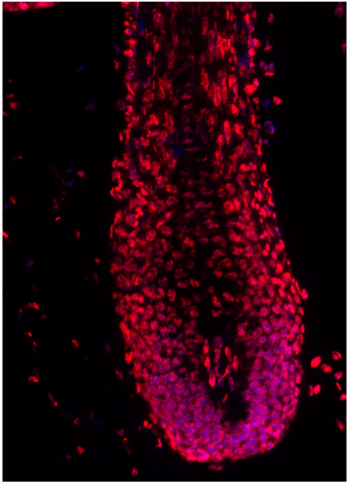
Hair follicle cells stained for 5-hydroxymethylcytosine
Until now the role of Tet proteins in hair biology remained unknown. In fact, what we have discovered is that when these enzymes are not working (as in our mouse gene knockout studies), hair formation is disrupted with hairs forming with altered shape/texture, growing to a shorter length, and eventually leading to hair loss.
However, the most exciting part of this finding was that without the Tet enzymes, the spatial organisation of the genomic regions harbouring keratin genes were affected. Often genes are localised in domains – think of this as a hub station on a rail network. In particular, this applies the region of the genome where keratin genes (for example Krt25 and Krt28) reside. This suggests that Tet enzymes are not only important for turning on keratin genes, per-se but also for organising the DNA to make the whole programme of keratin gene expression in a particular cell happen.
Our findings, published in Science Advances this month, uncovers a new role for Tet2/3 in establishing keratin gene expression programmes in hair follicle cells that will go on to form healthy hair and we suggest that this will help us understand the implications of this in abnormal hair growth.
Authors: Guo-Dong Chen, Iqra Fatima, Qin Xu, Elena Rozhkova, Michael Y. Fessing, Andrei N. Mardaryev, Andrei A. Sharov, Guo-Liang Xu, Vladimir A. Botchkarev Science Advances 2023, Vol 9, No2. https://www.science.org/doi/10.1126/sciadv.abo7605
The University of Bradford will lead research into the skin microbiome and how it affects skin conditions and ageing, as part of a new UK-wide virtual institute
The research could lead to a better understanding of conditions like eczema and acne, and scientists believe it can also shed light on the ageing process itself.
The new UK Ageing Network - launched on March 7 - is funded by UK Research & Innovation, the Biotechnology and Biological Sciences Research Council, and the Medical Research Council, and includes 11 networks, each focused on a different aspect of ageing.
Professor Julie Thornton, Director of the Centre for Skin Sciences at the University of Bradford, will lead the Skin Microbiome in Healthy Ageing (SMiHA) network, a multi-disciplinary UK research community comprising universities, industry, and healthcare practitioners, whose goal is to identify how changes in the composition of the skin microbiome reflect acceleration or deceleration of the ageing process and age specific disorders.
Other founding members come from the University of Manchester, University of Liverpool, University of East Anglia and Queen Mary University of London.
Prof Thornton said: “We want to understand how changes in the skin microbiome affect skin health and identify links with ageing and its role in conditions like eczema or in wounds that won't heal. Is it something to do with an age-related microbiome? Ultimately, our aim is to understand how to reset or regulate the skin microbiome as a route for healthy ageing."
Read the full article - The skin microbiome and healthy ageing
More information on the Network can be found here UK Ageing Network
SMiHA Twitter: @SkinMicroAgeing
UK Ageing Twitter: @UKAgeing

Prof Julie Thornton
New grant awarded to Dr Poterlowicz
We are delighted that Dr Krzysztof Poerlowicz, Associate Professor in Bioinformatics and Biostatistics and ELIXIR UK Training Coordinator, has won a major new grant from UKRI to deliver ELIXIR-UK: FAIR data stewardship training as part of £10 million grants for secondments and training programmes in health and bioscience. Dr Poterlowicz said "I am looking forward to leading this multi-institutional project to establish a national training fellowship in health and biosciences data management"
More information can be found here. https://ukri.org/news/initiatives-boost-health-and-bioscience-skills-and-industry/

Dr Krzysztof Poterlowicz
Our recent paper with Aveda rated as being of special significance in its field by Faculty Opinions member Prof Jiro Kishimoto
Prof Kishimoto commented:
"This is the first comprehensive report on age-related changes of female pattern hair loss (FPHL) focused on mesenchymal components surrounding the hair follicle (HF), which are dermal fibroblast (DF) and dermal sheath (DS) cells". He went on to say "This report is particularly important in two aspects. One is that they investigate both histological changes and alteration of biomarker gene expression and proteomics using scalp tissue samples. The second is they focused on the mesenchymal part including DS, which is acknowledged as the key component in HF and has a pivotal role in hair cycling and anagen hair regrowth". https://facultyopinions.com/prime/739229571
This is a great testimony to the power of translational research to contribute new scientific findings in experimental dermatology.
Rachael Williams, Gillian E. Westgate, Alison D. Pawlus, Stephen K. Sikkink, M. Julie Thornton. Age-Related Changes in Female Scalp Dermal Sheath and Dermal Fibroblasts: How the Hair Follicle Environment Impacts Hair Aging, Journal of Investigative Dermatology, 2020, http://www.sciencedirect.com/science/article/pii/S0022202X20323496

Lead author Rachael Williams
Stress-sensing in the human greying hair follicle: Ataxia Telangiectasia Mutated (ATM) depletion in hair bulb melanocytes in canities-prone scalp
We report a new role for Ataxia Telangiectasia Mutated (ATM) in protecting hair bulb melanocytes from oxidative stress in scalp hairs. ATM is a DNA damage and ROS sensor that has previously been shown to protect melanocyte stem cells in the bulge region of mouse hair follicles from stress that can lead to hair greying. Here we shown that it is also has a role in protecting melanocytes within the bulbs of human scalp hair. Our study showed a close correlation between nuclear ATM expression in hair bulb melanocytes and pigmentation in the hair follicle. Greying hair follicles were associated with reduced or absent ATM expression. Preliminary observations in cultured hair follicle melanocytes showed that ATM activity was important for cell survival particularly when ROS was present. Our study also discovered that several other proteins involved in DNA repair, ROS regulation and apoptosis, which are not normally associated with hair follicle regulation, were found in the inner root sheath (IRS) as well as other parts of the hair follicle. Taken together these new findings illustrate the key role of ATM in the protection of human hair follicle melanocytes from oxidative stress/damage within the human scalp hair bulb and highlight the remarkable complexity and role of redox sensing in the status of human hair follicle growth, differentiation and pigmentation.
Sikkink, S.K., Mine, S., Freis, O. et al. Stress-sensing in the human greying hair follicle: Ataxia Telangiectasia Mutated (ATM) depletion in hair bulb melanocytes in canities-prone scalp. Sci Rep 10, 18711 (2020). https://doi.org/10.1038/s41598-020-75334-9
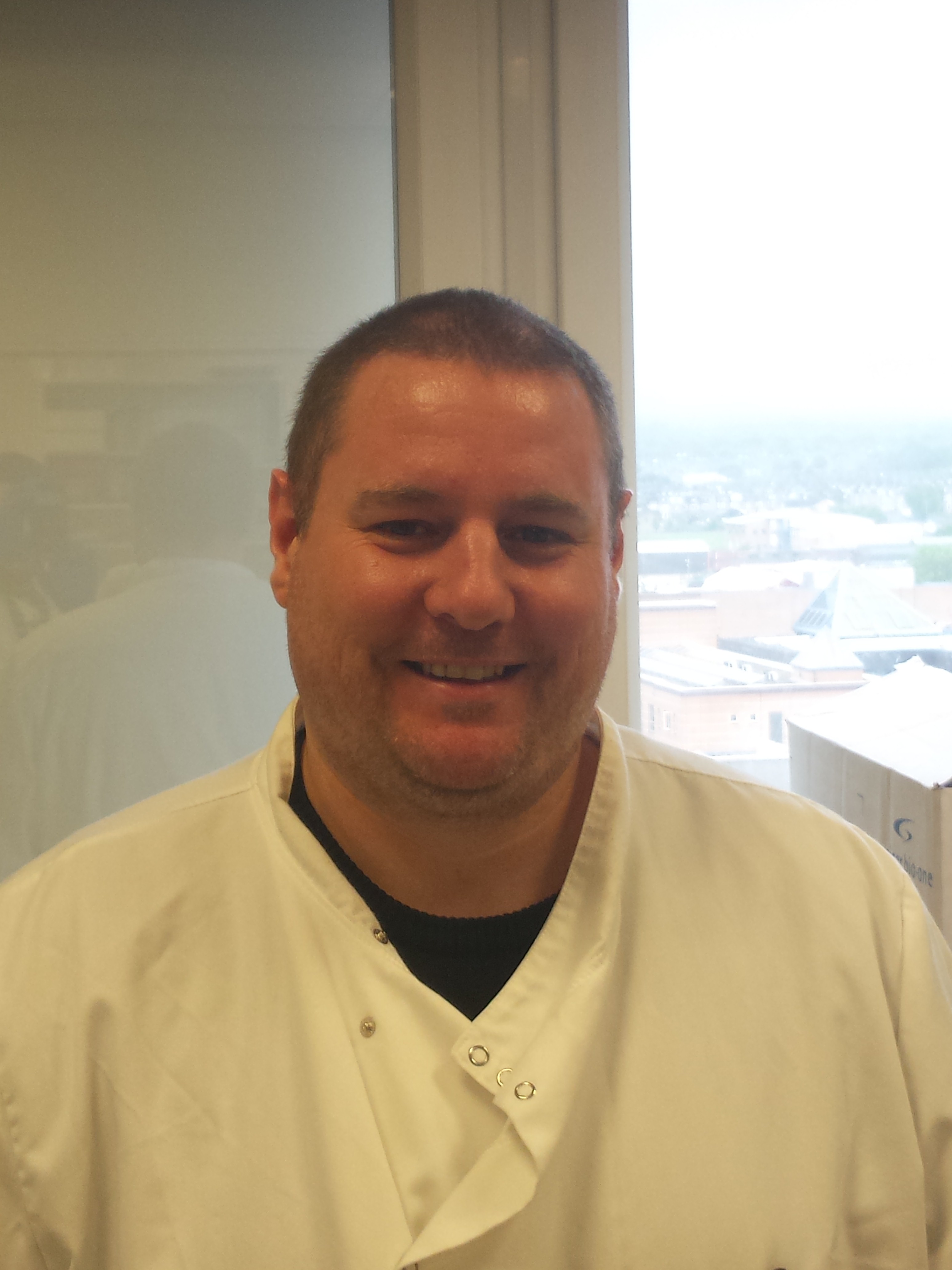
Dr Steve Sikkink said ‘The work published is the result of several years of research collaboration with our partners at BASF Beauty Care Solutions in France'
Getting under the skin of hair aging: the impact of the hair follicle environment
Like the skin, our hair shows striking changes with age, producing hairs with altered diameter, lustre, and texture. The biology of hair aging has focused predominately on various aspects of the hair cycle, follicle size, and the fibre produced, but surprisingly the impact of the aging scalp dermal environment on the hair follicle and fibre has been generally overlooked.
Hair loss affects both sexes with incidence increasing with age. In men, male pattern‐balding (androgenetic alopecia) is driven by androgens and follows a specific pattern of frontotemporal and vertex regression. Women also experience female pattern hair loss (FPHL), presenting as more general, diffuse hair thinning. Hair thinning in women is commonly associated with the menopause, corresponding with other age‐related changes in skin.
The rapidly growing hair follicle undergoes continued renewal throughout the life span of an individual, where it is exposed to a substantial number of extrinsic and intrinsic stressors. As the hair follicle sits deep within the dermis with its bulb residing in the hypodermis, detrimental age‐related changes in the surrounding scalp skin may likely disrupt the hair follicle machinery. The impacts of these changes are unknown, but evidence suggests that scalp skin aging and hair follicle aging go hand‐in‐hand.
Herein we summarize the evidence that the age‐related changes observed in sun‐exposed human skin also occur in scalp skin and that these changes are likely to play a contributing role in the aging hair phenotype.
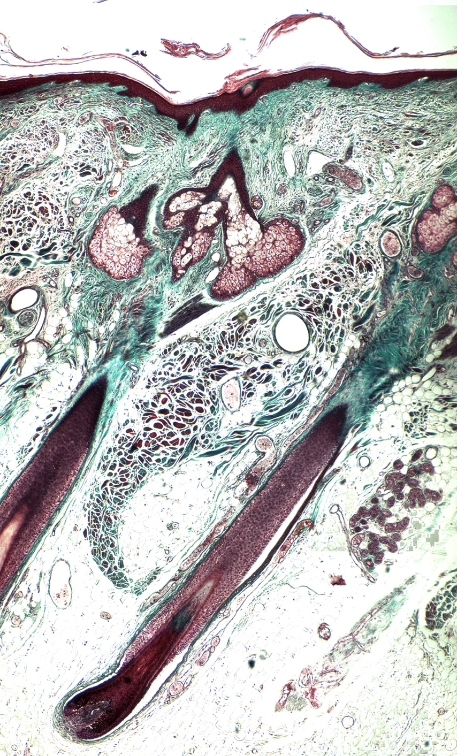
This study provides the first data on how general scalp ageing influences the hair follicle and impact of age on hair growth
Dr Julie Thornton, Director CSS
University appoints its first Professor of Plastic Surgery
Consultant plastic surgeon Ajay L Mahajan has been awarded a chair in Plastic Surgery to acknowledge his many academic and clinical achievements and his close association with the Centre for Skin Sciences. Prof Mahajan took over as Director of the Plastic Surgery and Burns Unit (PSBRU) from Prof David Sharpe in 2013, and the PSBRU continues to flourish with charitable funding from the citizens of Bradford, especially the supporters of Bradford City football club which supports research fellows in a PhD training programme to better understand wound healing and scarring for better patient outcomes.
As featured in a recent article in the T&A the following explains what this honour means to Prof Mahajan.....
“I am very honoured to be awarded the Chair of Plastic Surgery at the University of Bradford. The University of Bradford has been at the forefront of academic achievements in the recent past and it has been a privilege to be a part of it.
"We have been able to do valuable research at our unit and I am very grateful to the people of Bradford for supporting us.
"I look forward to contributing towards the progress of the profile of the University and improve treatment and quality of life of patients who have been injured or sustained burns"

Professor Ajay Mahajan with Professor David Sharpe at the Pulse Local hero awards (from the T&A)
CSS joins Labskin UK in a new KTP project
The Centre for Skin Sciences (CSS) is delighted to announce a partnership with Labskin UK (York) to work on an ambitious 28-month Knowledge Transfer Partnership (KTP) project, funded by Innovate UK. CSS, as the knowledge partner, will bring its considerable knowledge, skills and understanding of the interactions between skin cells and melanocytes to help Labskin fulfil its ambition to develop the world’s first commercially available pigmented full thickness, three cell skin equivalent model. This new model will be available at Labskin for companies to use to evaluate products for cosmetic tone matching applications in health and beauty, but also be a pathfinder project to enable future UV protection and drug effect studies.
The team is now looking for an MSc/PhD level research associate to complete the project alongside the Labskin and Bradford University teams.
Alex Chapman (Head of Operations - Labskin) said, “This is a really exciting project for us and one we have wanted to do for some time. We look forward to working with our colleagues from the University of Bradford and getting this advancement out to the scientific community”.
Dr Jacobo Elies, the University of Bradford project supervisor said “this brings an exciting new relationship with Labskin and opportunity to work in the excellent KTP programme” and Dr Julie Thornton, Director for CSS and principle investigator for the project said “the award of this KTP project is a further example of the success that CSS continues to have in engaging with companies and helping support the development of their commercial opportunities”
Labskin is part of the Integumen PLC group and is in a rapid development phase at its home on the National Agri-Food Innovation Campus (NAFIC) at Sand Hutton just outside York. To stay up to date with recent developments and company news please visit https://www.labskin.co.uk/stories/ or follow us on @Labskin
This partnership is receiving financial support from the Knowledge Transfer Partnerships (KTP) programme. KTP aims to help businesses to improve their competitiveness and productivity through the better use of knowledge, technology and skills that reside within the UK knowledge base. This Knowledge Transfer Partnership project, funded by UK Research and Innovation through Innovate UK, is part of the government’s Industrial Strategy.
New skin scientists appointed to work in the Centre for Skin Sciences
The School of Chemistry and Biosciences appoints two lecturers in the Centre for Skin Sciences
Applicants with research interests in all areas of skin biology were sought, including those particularly interested in skin cancer and wound healing. The new recruits will also teach cell and molecular biology in our successful BSc in Biomedical Sciences as well as advanced topics in cell and molecular biology in our MSc programmes.
We welcome Karthic Swaminathan and David Ansell who will be taking up their posts shortly as Lecturers in Skin Sciences
Nutrafol signs research collaboration agreement with Centre for Skin Sciences at the University of Bradford
New York, NY (August 23rd, 2019) — Nutraceutical Wellness LLC (Nutrafol) a NY-based nutritional supplement company that aims to help men and women experiencing thinning hair through a multi-targeted approach, reports that a collaboration agreement has been signed with the Centre for Skin Sciences (CSS) at the University of Bradford, UK.
The intended purpose of this project is to explore the interaction of nutraceutical phyto actives and hormone signaling in a range of relevant cell types.
"This project presents a very exciting opportunity to collaborate with Nutrafol on such an interesting and important question and we hope that our research will support Nutrafol’s vision to help reduce the impact of hair thinning" commented Dr Julie Thornton, Director of CSS and principal investigator for the project.
The collaboration between CSS in the Faculty of Life Sciences, and Nutrafol will bring together science and expertise to research human hair biology, hair thinning, and the connection between molecular mechanisms and hormonal signals in many cell types.
About Nutrafol/Nutraceutical Wellness
Nutraceutical Wellness, LLC was established with the mission of bringing safe and efficacious natural products to the market that solve hair issues from a fully integrative approach. Nutrafol’s passionate team of doctors, scientists and researchers are steeped in the areas of molecular biology, anti-aging and immunology, to better address and approach the various hormonal, environmental and hereditary causes of compromised hair health. Nutrafol exists solely to optimize hair wellness and create natural, scientifically formulated solutions that are trusted by consumers, beauty experts and healthcare professionals worldwide.
For more information, visit the brand on Facebook, Twitter or Instagram, or at http://www.nutrafol.com.
New Director of CSS
Dr Julie Thornton was recently appointed as the new Director of the Centre for Skin Sciences (CSS), the first female to lead a research Centre in the Faculty. Julie has exciting plans for the continued development of CSS highlighting the use of skin as an accessible and tractable model for a wide range of studies around tissue regeneration, disease and ageing.
Julie has a BSc (Joint hons) in biochemistry from the University of East Anglia, but her interest in skin biology was sparked by her PhD studies on the role of androgens in human hair growth. While her research interests started in endocrinology, she has continued to widen her interests in this field using human skin as an accessible model. In recent years her research has been heavily focused around wound healing, and she is deeply engaged in further developing the Plastic Surgery and Burns Research Unit (PSBRU) and is heavily involved in associated fund raising activities. She also has significant experience working with industry, leading several high value collaborations with companies in Europe and the US. Julie has supervised 17 PhD students from a range of backgrounds including both home and international students, in addition to the medics supported by the Burns Unit. The University recently nominated Julie for the Times Higher Outstanding Research Supervisor of the Year.

Dr Julie Thornton, Director, Centre for Skin Sciences
Investigative Dermatology comes to Bradford
The University and Centre for Skin Sciences are delighted to welcome 180 delegates from all over the UK and internationally to the annual BSID conference from 1st to 3rd April. The conference is organised by the office of the British Association of Dermatology with a local organising committee of CSS staff. The first morning includes a specialised workshop on Epigenetics of Skin - analysis of high throughput bioinformatics data, led by Dr Krzysztof Poterlowicz and Dr Andrei Mardaryev. Dr Miriam Wittmann hosts a parallel session: Bench to Bedside: Monday Eczema session, encompassing the ALPHA trial. The conference opens at 1pm with the Skin Club whose topic this year is The Hair Follicle: Skin's multifunctional appendage extraordinaire, chaired by Dr Julie Thornton and Prof Des Tobin, with speakers from California, Germany and from Prof Kevin McElwee, based here in Bradford.
Amongst many excellent talks highlights will include the Keynote Guest Lecture from Prof Sabine Werner (Zurich) on 'Stromal-epithelial cross talk in inflammatory skin disease and cancer' and the Distinguished Local Lecture given by Prof John Wright 'Born in Bradford- can a research study change a city'. BSID Chair Prof Des Tobin will also award Prof Chris Griffiths (Manchester) the prestigious BSID Medal at the conference Dinner in Victoria Hall, Saltaire.

We are delighted to announce that CSS signed a collaboration agreement with Follicum BV to begin research on novel peptides for therapeutic benefits in hair loss and diabetes.
Dr Gill Westgate, business manager for CSS, helped the academic team develop the partnership with Follicum during 2018. She said: "This project presents a very exciting opportunity to collaborate with Follicum at such an important point in their evolution."
For more details follow the links below.
https://www.bradford.ac.uk/news/2018/css-follicum-collaboration.php
Oddfellows Charity continue to support research with a further donation to the Burns Research Unit
The donation marked the final stage of a major three-year funding partnership which began in 2015 and has totalled £88,000. The money has been used to directly support the unit’s delivery of a potentially life-changing project into hard-to-heal wounds and burns.
Titled ‘Exploiting the Hair Follicle as the Preferential Source of Wound Healing Cells in the Human Skin’, the project has seen the research team, grow fibroblast cells found in human hair follicles and through new technologies investigate their importance in the wound healing process, specifically under diabetic conditions where the healing process is compromised.
The plastic surgery and burns research unit was founded following the Bradford City Fire in 1985.
Dr Stephen Sikkink, Experimental Officer of the University of Bradford’s Centre for Skin Sciences (CSS), said: “With diabetes diagnoses rapidly increasing and an ever-ageing population, our continued research into the cellular changes that result in impaired would healing is incredibly important.
“We’d like to thank the Oddfellows for their support in funding our research project.
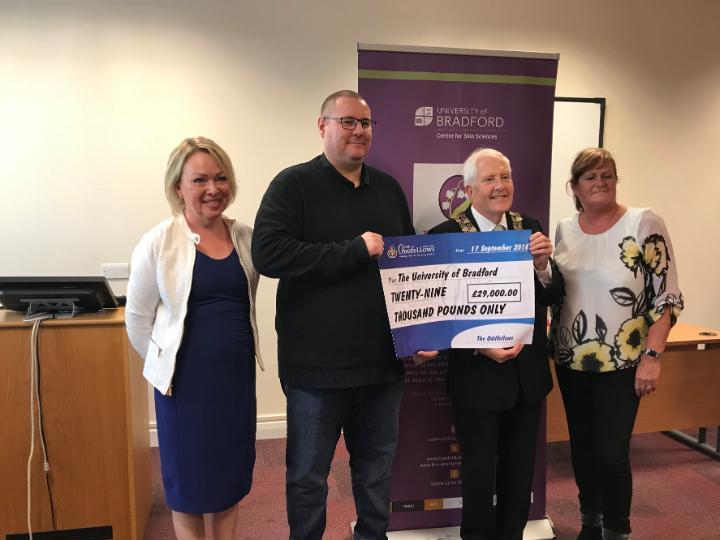
Odd fellows representetives present the final cheque to The Burns Research Unit staff Dr Julie Thornton (left) and Dr Stephen Sikkink (second left).
Centre staff launch first book on skin epigenetics
Back in 2012 CSS hosted the first ever symposium on Skin Epigenetics which attracted a stellar international faculty of speakers. The second symposium in 2016 was equally popular and influenced research activities in many labs across the world.
Since then this topic has become a firm favourite in all the major skin conferences, with Centre staff making a significant contribution to the field in publications and conferences, demonstrating just how useful skin tissues are to study epigenetic mechanisms in tissue development and repair.
Topics in the book include:
- Integration of epigenetic and transcriptional regulation of skin regeneration
- The role of microRNAs in skin and hair biology
- Polycomb proteins in skin development and regeneration
- Epigenetic regulation of wound healing
- RNA methylation in control of stem cell activity
- Enhancer promoter interactions
- DNA methylation as a DNA memory keeper
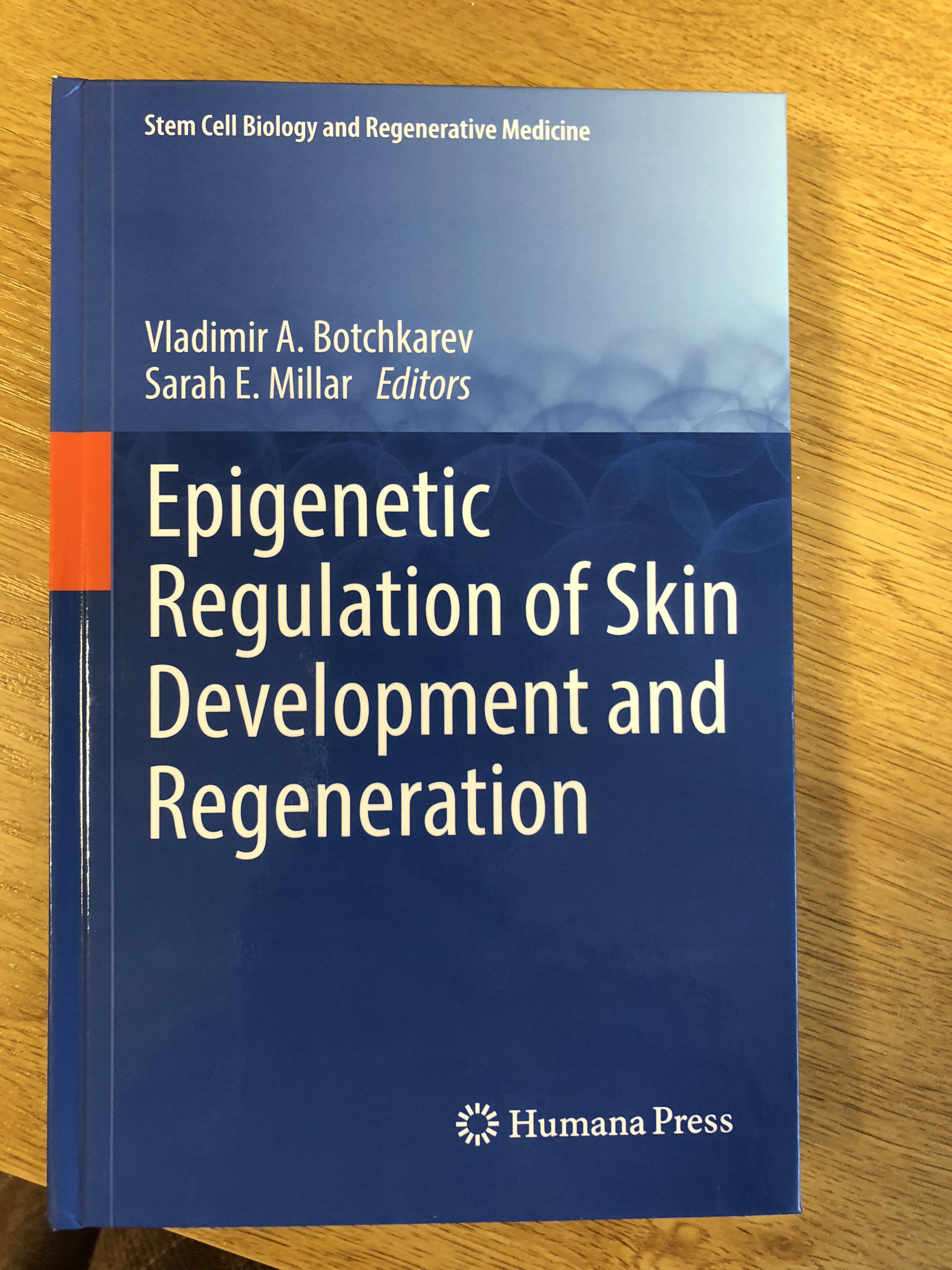
Contributing Centre staff - Vladimir Botchkarev, Michael Fessing, Andrei Mardaryev and Natalia Botchkareva
An explanation for the mysterious distribution of melanin in human skin
Unravelling a mystery was one of the key aims of the work of Dr Nicolas Joli Tonetti, Prof Des Tobin and co–authors studying the fate of melanin in human skin. The latest paper from the Centre for Skin sciences, University of Bradford, in collaboration with Walgreen Boots, provides ‘An explanation for the mysterious distribution of melanin in human skin - a rare example of asymmetric (melanin) organelle distribution during mitosis of basal layer progenitor keratinocytes’.
Published on line on June 29th 2018 in the British Journal of Dermatology, the researchers sought to re-evaluate the long-held dogma that melanin was made in melanocytes, transferred to keratinocytes and then was degraded in the upper layers of the skin. Using several approaches including highly pigmented skin donors with mild and moderate tape strip challenge to induce basal cell mitosis, the teams results suggest that most of the melanin granules are inherited by the non-differentiating skin cells and that this is achieved via ‘asymmetric organelle inheritance’.
Joly-Tonetti N, Wibawa JID, Bell M, Tobin DJ. An explanation for the mysterious distribution of melanin in human skin - a rare example of asymmetric (melanin) organelle distribution during mitosis of basal layer progenitor keratinocytes. Br J Dermatol. 2018 Jun 29. doi: 10.1111/bjd.16926. [Epub ahead of print]
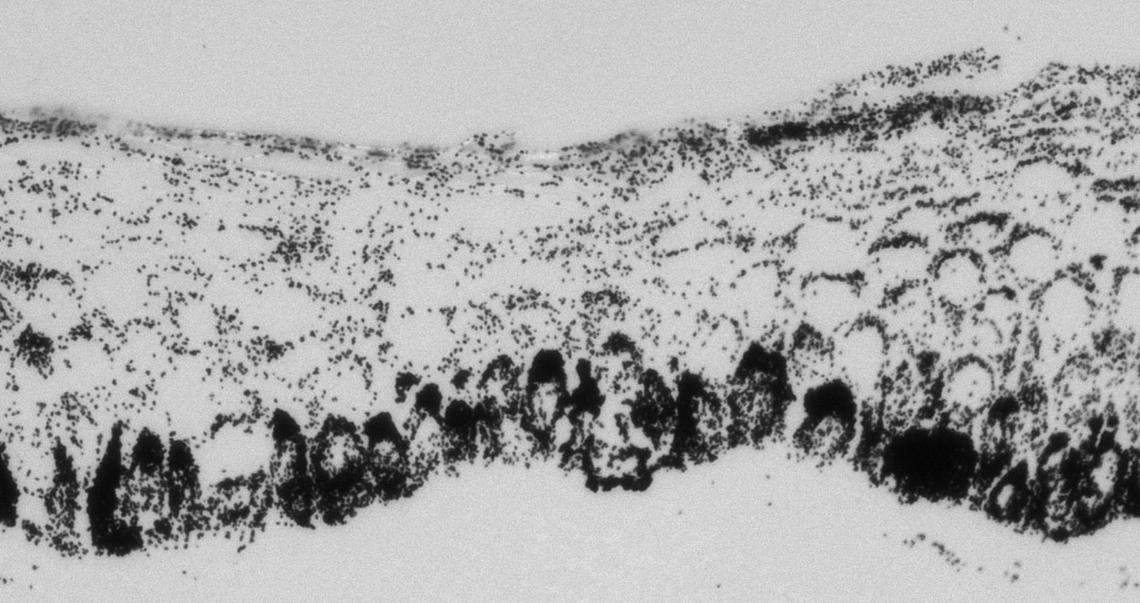
Melanin in skin stained using Warthrin Starry method
